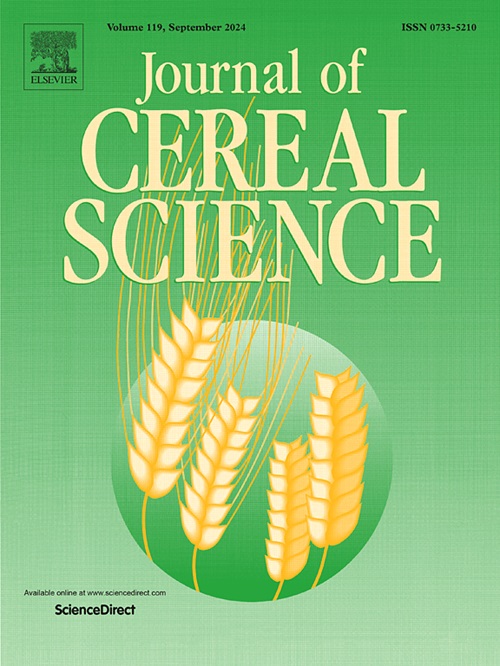The cryoprotective effect of wheat bran-soluble dietary fiber on frozen gluten protein quality
IF 3.7
2区 农林科学
Q2 FOOD SCIENCE & TECHNOLOGY
引用次数: 0
Abstract
This study aimed to investigate the cryoprotective effects of wheat bran-soluble dietary fiber (WB-SDF) on the structural and functional stability of gluten proteins in frozen dough, addressing the limited research on the role of soluble dietary fiber in mitigating freeze-induced quality deterioration. Existing studies predominantly utilized whole dietary fibers, while WB-SDF, with superior hydration and functional properties, holds potential for enhancing frozen dough quality. Gluten protein samples were prepared with varying WB-SDF concentrations (0–8 %), subjected to frozen storage (−20 °C) for 0–60 days, and analyzed for hydration properties, surface hydrophobicity, secondary structure, disulfide bonds, molecular interactions, water distribution, and microstructure. Results demonstrated that 4 % WB-SDF addition optimally preserved gluten protein integrity. Compared with the control group, it significantly enhanced hydration and foaming capabilities, suppressed hydrophobic exposure, mitigated β-turn loss, and reinforced intermolecular forces by stabilizing hydrogen bonding and hydrophobic interactions. SDS-PAGE and SEM confirmed that 4 % WB-SDF promoted protein aggregation and stabilized the gluten network. These findings highlight WB-SDF as an effective cryoprotectant for frozen dough, facilitating high-value utilization of wheat bran and advancing whole wheat product development.

小麦麸溶性膳食纤维对冷冻面筋蛋白品质的冷冻保护作用
本研究旨在研究小麦麸皮可溶性膳食纤维(WB-SDF)对冷冻面团中面筋蛋白结构和功能稳定性的冷冻保护作用,以解决可溶性膳食纤维在减轻冷冻导致的品质变差方面的研究不足。现有的研究主要利用全膳食纤维,而WB-SDF具有优越的水化和功能特性,具有提高冷冻面团质量的潜力。制备不同WB-SDF浓度(0 - 8%)的面筋蛋白样品,冷冻保存(- 20°C) 0-60天,分析水合性质、表面疏水性、二级结构、二硫键、分子相互作用、水分分布和微观结构。结果表明,添加4%的WB-SDF最能保持面筋蛋白的完整性。与对照组相比,它显著增强了水化和发泡能力,抑制了疏水暴露,减轻了β-转损失,并通过稳定氢键和疏水相互作用增强了分子间力。SDS-PAGE和SEM证实,4% WB-SDF促进蛋白聚集,稳定面筋网络。这些发现强调了WB-SDF作为冷冻面团的有效冷冻保护剂,促进了麦麸的高价值利用,推动了全麦产品的发展。
本文章由计算机程序翻译,如有差异,请以英文原文为准。
求助全文
约1分钟内获得全文
求助全文
来源期刊

Journal of Cereal Science
工程技术-食品科技
CiteScore
7.80
自引率
2.60%
发文量
163
审稿时长
38 days
期刊介绍:
The Journal of Cereal Science was established in 1983 to provide an International forum for the publication of original research papers of high standing covering all aspects of cereal science related to the functional and nutritional quality of cereal grains (true cereals - members of the Poaceae family and starchy pseudocereals - members of the Amaranthaceae, Chenopodiaceae and Polygonaceae families) and their products, in relation to the cereals used. The journal also publishes concise and critical review articles appraising the status and future directions of specific areas of cereal science and short communications that present news of important advances in research. The journal aims at topicality and at providing comprehensive coverage of progress in the field.
 求助内容:
求助内容: 应助结果提醒方式:
应助结果提醒方式:


